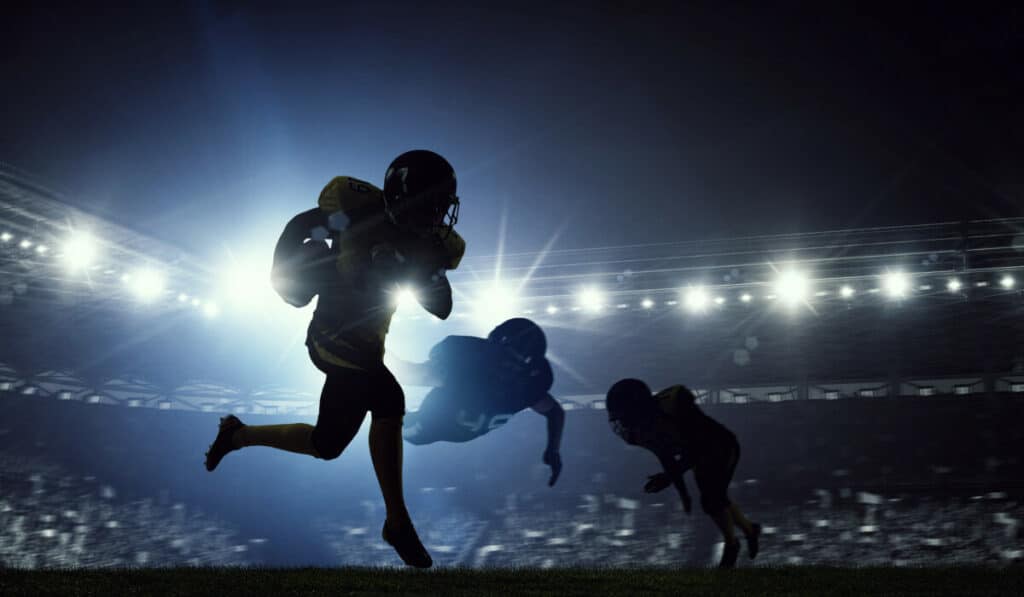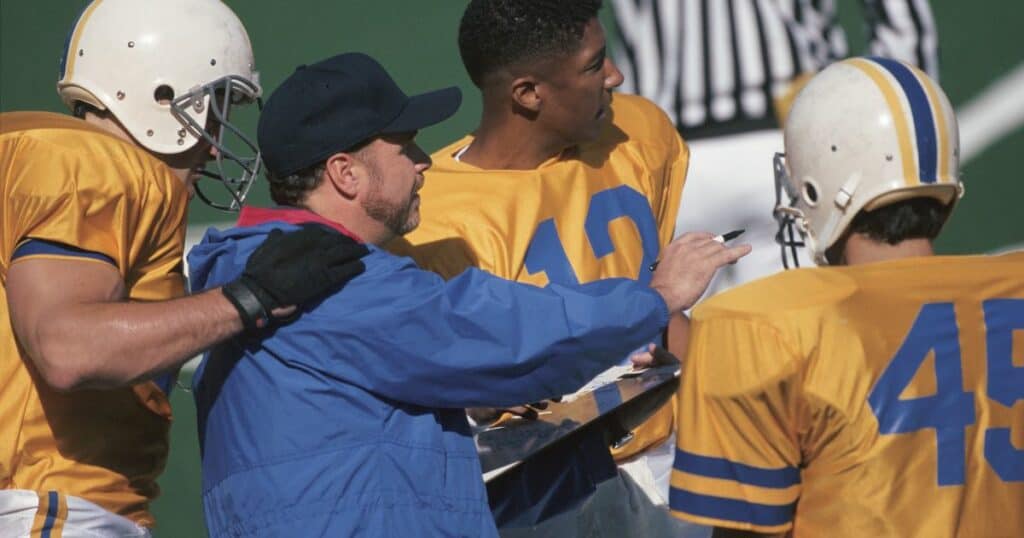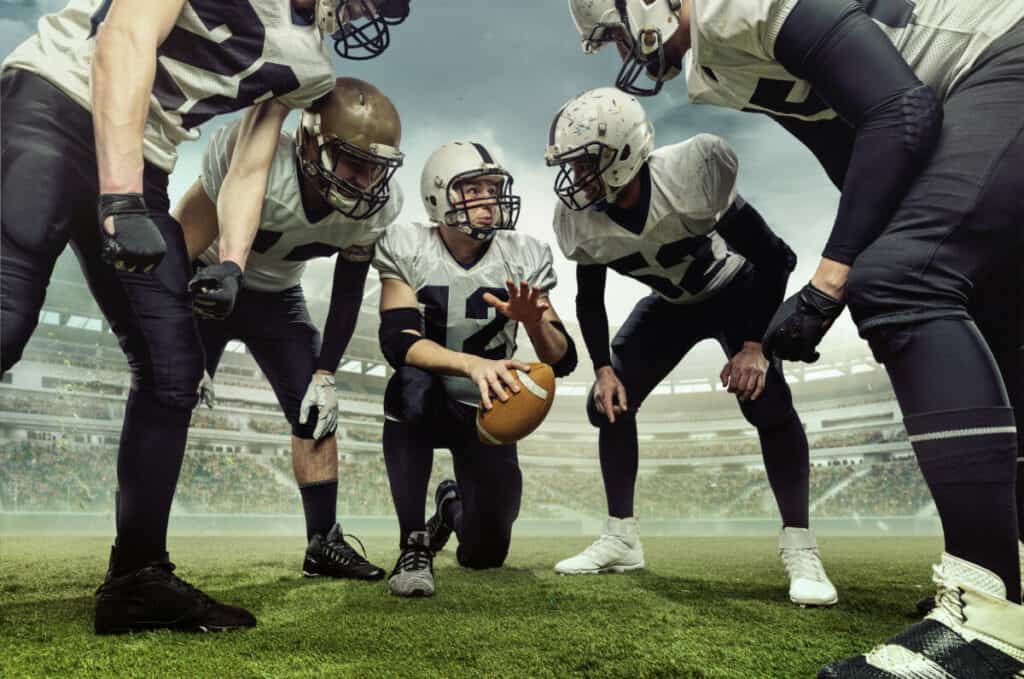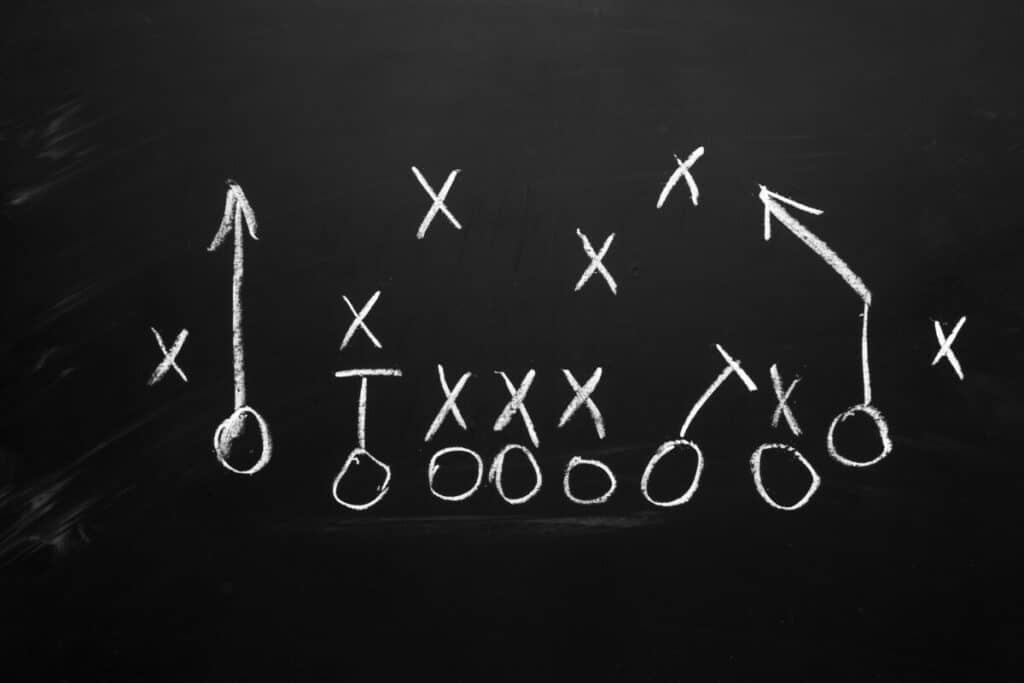why do college football coaches wear different colors?
During the last game did you notice that the different coaches on your favorite team were wearing different color outfits? This is actually a very common thing that most teams do nowadays. As a sports fan, I can tell you why college football coaches wear different colors during their games.

Bookmark these other popular college football topics for more reading: How much do D3 Football Coaches Make?, Do college football coaches get drug tested? and Why are college football games so long?
College football coaches will wear different colors during games to help make play calls. Many coaches will have other coaches do false signals to confuse the other team. To tell a real signal from a false signal they have the coaches dress in bright colors, which makes them easier to identify.
This more recent technique has only been done intensely in the past couple of decades. There is a lot of history behind it, though. Continue reading to learn more about the history of signal tricks.
The History
Signals have been used for a very long time to give off plays. The first signal ever recorded was back in 1929 in a college game between Syracuse University and Cornell University. Signals used to be very simple, but they have morphed with time.
Hand signals gained popularity when ASU coach Todd Graham was caught using American Sign Language to communicate with his quarterback on the field. This was obviously a very easy-to-decipher code, but other coaches have gotten creative with them.
They have included things such as touching an ear to sticking a thumb up or down in the air. These different cues are taught before the players enter the field so they know what they are doing. It helps them to understand what their coaches are seeing.

In 2008, though, Chip Kelly from Oregon changed the play signal world by using a picture board. The picture board would be broken into four sections. They would each show a picture that would represent a part of a play. These pictures could be anything from color, celebrity, words, or animals. There have been no limits to what they could put on there, though.
These have helped the players to communicate the more difficult parts of a play. For instance, all in one board they can mention the formation, the protection, the Running Back’s responsibility, and the passing strategy. This change was revolutionary for the football world.
The problem with these plays was that the other team would start to learn each other’s signals. They could then read the signal and prepare accordantly. This made it harder to use signals. That is when false signals started to become popular.
There would be a person who would give off signals that were not real to confuse the other team. This was hard for players, though to tell who was giving off the real signals versus who was giving the false signals. As a result, colored shirts were introduced around 2013 when OSU decided to first use this ploy.
The Benefits

There are many benefits that come from having a colored shirt. It makes the coaches who are giving off the real game signals easier to spot, which is the main reason.
When you are in the middle of a game it is hard to be able to decipher which coach is giving a real one and searching for the right coach takes time and energy. Having to look for a color and then going off of whatever that coach is signaling is so much easier.
It also, means the coaches can use hand signals with more ease. For instance, the purple coach could be the coach that gives the lineup call with their hands. The orange coach on the other hand could be giving off the passing strategy.
By lining up the coaches with their colors it is another sneaky way of giving out a lot of information. This is also more secretive and effective than the picture board. The picture board can be deciphered since the pictures usually are somewhat connected to the play they are doing.
Using only hand signals is vaguer and requires more memorization, but it is also harder for the other team to break the code.
The Risks
The main risk is getting the colors mixed up. If you mix the colors up, you can do the wrong play. If even one person is out of the loop of the play, you will not be able to work as a team. Working as a team is the most important thing to do on the field. It is only together that a team can go to victory.
Another issue is if there are color-blind players. If there are any color-blind players, this would not work for your team. The player who is color-blind would not be able to tell which coach was wearing what outfit. They would have to go off of a coach’s face.
That could work since that was what was done in the past, but it makes it harder nonetheless. The player would be playing with a major handicap.
Other Ways of Signaling

Of course, we have noticed that coaches often wear headsets. What are those headsets for? Those headsets are used to communicate verbally with the players on the field. The coach can speak to the players through the headset telling them their plays.
Yet, this is not the most efficient option though a lot of times. The main issue with this technique is that a lot of the time the spectators are so loud in their cheering that it is too hard for the players to hear their coaches. Also, there are always connection issues that can come into play.
Most coaches fix these problems by having a mix of verbal cues along with their off-field cues. With those together, the team is more prepared. This is why having the colors is so important. We may live in a day of technology which may make wearing a different colored shirt and doing hand signals seem obsolete, but in reality, it is still very necessary due to the imperfections of technology.
